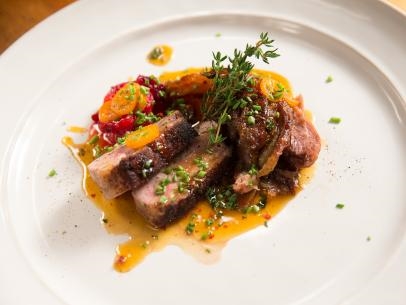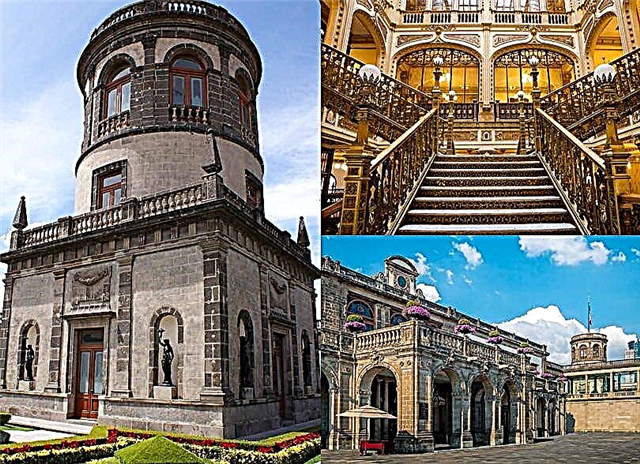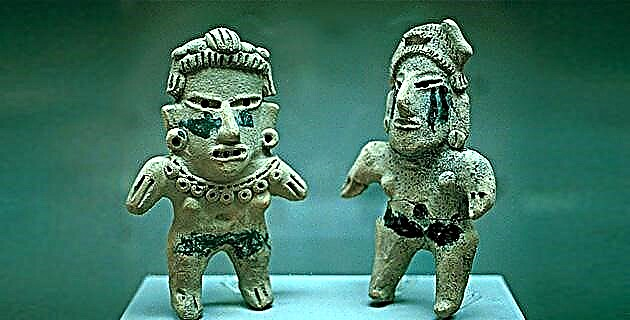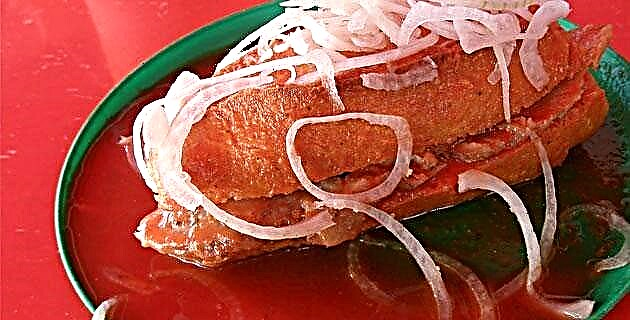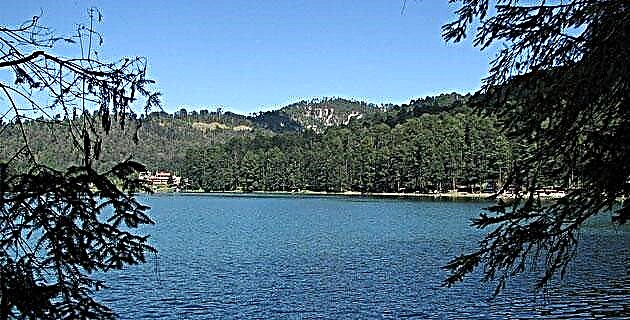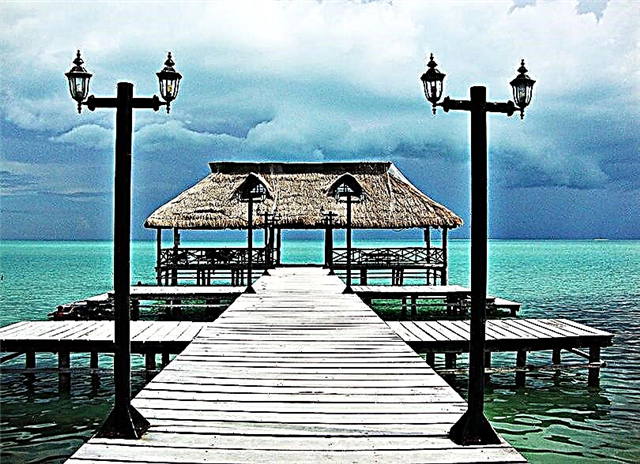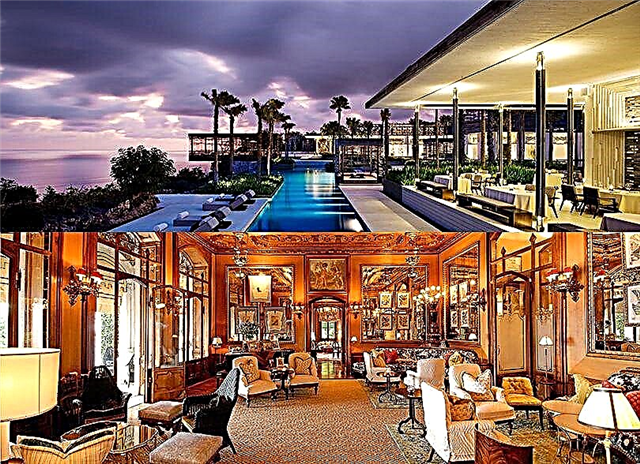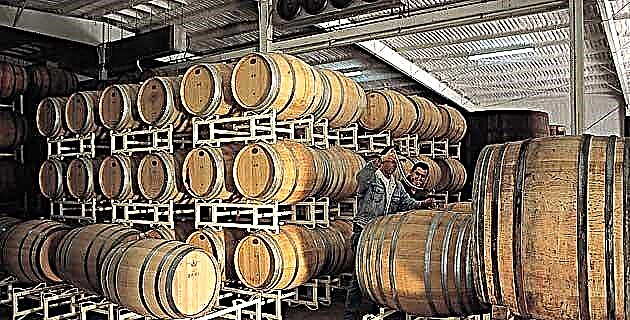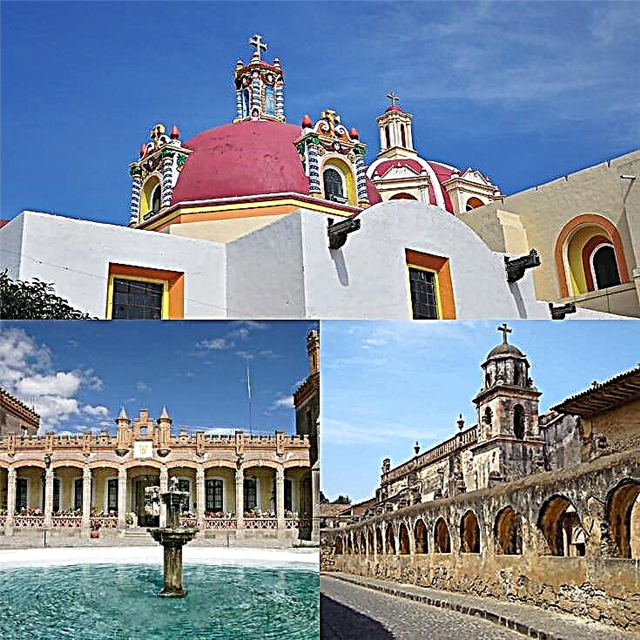Huamantla is a Magic Town of beautiful traditions and many other attractions. With this complete guide you will be able to enjoy all the charm that this Tlaxcala city offers.
1. Where is Huamantla?

Huamantla is the head of the Tlaxcala municipality of the same name, being also the second most populated city in the state of Tlaxcala. In 2007, Huamantla was elevated to the category of Mexican Magical Town by the Ministry of Tourism to take advantage of its various attractions, among which are interesting artistic, religious and culinary traditions; an admirable architectural heritage and spaces for the enjoyment of nature and the practice of outdoor entertainment.
2. How do I get to the city?
To go from Tlaxcala de Xicohténcatl, the capital of the state of Tlaxcala, to Huamantla, you have to travel 20 km. in the direction of Apizaco and then another 28 km. to get to the Magic Town. The other state capitals closest to Huamantla are Puebla, which is 56 km away; Pachuca, which is 150 km away. and Toluca, which is located 224 km. From Mexico City you have to travel 170 km. heading east on the highway that goes to Puebla.
3. What is the history of Huamantla?
The first registered pre-Columbian inhabitants of the current territory of Huamantla were the Otomis. The city was founded on October 18, 1534 by orders of Viceroy Antonio de Mendoza and was called San Luis Huamantla. Due to its strategic location, in 1847 it was the scene of the Battle of Huamantla, during the American-Mexican War. In 1858, during the War of the Reform, Huamantla was designated the capital of Tlaxcala, a status it maintained until 1863.
4. How is the climate of the city?
Huamantla has a pleasant, semi-dry and temperate climate, with an average annual temperature of 15 ° C, without extreme variations. During the warmer season, which runs from April to September, the thermometers average around 18 ° C, while in the coldest period, from December to February, the average temperature is close to 12 ° C. It rains about 682 mm per year, mainly from May to September.
5. What are the main attractions of Huamantla?
The great attractions of Huamantla are its traditions around the Virgen de la Caridad festivities, among which the Night that Nobody Duerme stands out; the beautiful sawdust rugs and the Huamantlada bullfighting festival. In the city the brave festival is lived intensely, as the bullring, the fighting bull ranch and the Bullfighting Museum also attest. Other interesting Huamantla traditions revolve around puppets and pulque.
6. How is the Night that Nobody Sleeps?
It is a day of festive vigil between the night of August 14 and the early morning of August 15, the day of the Virgen de la Caridad. The main activity of the night is the preparation of the beautiful sawdust rugs and other materials through which the virgin will pass, in a procession that leaves the temple at 1 in the morning. The colorful and ephemeral rugs should not be stepped on until the virgin passes and the inhabitants of each street receive the pilgrimage with music and fireworks.
7. How did the tradition of sawdust rugs come about?
This beautiful tradition began in 1943 when several residents of Huamantla decided to create a colorful path to highlight the passage of the Virgen de la Caridad procession. Since then, people strive every year to enlarge the rugs and improve the designs and varieties of these short-lived works of folk art. Outside of the annual fair, every Saturday, starting at noon, one of these rugs is made in Margarita Maza alley, for the enjoyment of tourists.
8. What about the bullfighting tradition?
Bullfighting is so immersed in the popular culture of the town, that Huamantla is called the Taurine City. La Taurina bullring is one of the places where the brave festival is lived with more fervor and Huamantla is the seat of cattle ranches of fighting bulls. In its journey that already exceeds 60 years, the Huamantlada has become one of the most emotional bullfighting shows in Latin America. The whole history of the Huamanteca bullfighting tradition is collected in the Bullfighting Museum.
9. What is the Huamantlada?
It is a bullfighting event that begins at noon on the last Saturday of the Virgen de la Caridad fairs. In a similar way to the Sanfermines of Pamplona, several bulls are released through the streets of the city in front of the excited public, to later be fought. For the occasion, the main streets of Huamantla are equipped with stands for greater public comfort and with fences and burladeros to favor the safety of the participants. The number of bulls has been growing over time and currently exceeds 30.
If you want to know more about the Huamantlada click here.
10. What are the main cattle ranches?
Tlaxcala and Huamantla are home to several herds of fighting bulls that feed the local passion for the bullfighting festival. These include Rancho Seco, El Grullo Livestock and Hacienda La Laguna. The operator México Viejo Tours offers tours of these farms, in what could be called the "route of the bull" that includes tours of the pastures, tentaderos, cortijos and other places. Likewise, there are several former haciendas, such as Santa Bárbara and La Compañía, which show the testimonies of their past splendor as breeding centers.
11. What's in the Bullfighting Museum?
The Huamantla Bullfighting Museum is located at Allende Norte 205 and operates in an 18th century building, next to the Plaza de Toros La Taurina. The museum was inaugurated in 1981 and has a collection of models of the main Mexican bullfighting venues, such as the Monumental in Mexico City and El Relicario de Puebla. Likewise, it exhibits old bullfighting posters, light suits, crutches, capes, flags, rapiers and other objects, as well as photos, sculptures and technical sheets of great bullfighters.
12. What are the most outstanding buildings?
In the architectural landscape of the city the basilica of Nuestra Señora de la Caridad, the former convent of San Luis, the church of San Luis and the Municipal Palace are distinguished. Unlike most of the basilicas and Mexican parish churches, the temple of Our Lady of Charity does not come from the colonial era, but is of recent construction and austere architecture. The procession of the Virgen de la Caridad leaves this church in the early morning of August 15, during the famous Night that Nobody Sleeps. From the very atrium of the temple covered with picturesque sawdust rugs, the Virgin is carried through the streets adorned with these beautiful manifestations of popular art.
13. What stands out in the former Convent of San Luis?
This Franciscan convent complex was completed in 1585 and stands out for its beauty and the works of religious art it contains. In the Open Chapel of San Luis we can see the main altarpiece, in the Churrigueresque style with anthropomorphic reliefs, and the minor altarpieces and oil paintings on canvas that are along the walls. In the Chapel of the Third Order, the oil paintings located in the choir and the basement stand out, as well as the main altarpiece, in the Baroque style.
14. What is the Church of San Luis Obispo like?
This temple in which San Luis Obispo de Tolosa is venerated was built during the seventeenth century and has a striking three-section Baroque portal, ornamented with five alabaster images interspersed between the columns. Inside there is an extraordinary baroque altarpiece with stipes, dedicated to San Luis Obispo, Nuestra Señora de la Concepción and Jesus Christ. The temple also keeps a collection of religious painting.
15. What is the most interesting thing about the Municipal Palace?
The municipal administration of the city of Huamantla operates in a building with two main floors, with wrought iron balconies on the upper level, the first version of which was built at the end of the 16th century as a tithe collector for the Franciscan order. Before being a municipal palace, the building was also a viceroyalty alhóndiga, hospital, prison and social center. Since 2001, the City Museum has been operating in the palace, with free access.
16. How did the puppetry tradition come about?
The Huamantla puppetry tradition dates back to the third decade of the 19th century, when the Aranda brothers (Julián, Hermenegildo, María de la Luz and Buenaventura) and Antonio Rosete, María de la Luz's husband, founded the Rosete Aranda puppet company, which remained active between 1835 and 1958. They became so famous that President Benito Juárez requested a function in the presidential palace. After the founders, the tradition was continued by their descendants.
17. Is there a museum allusive to puppets?
The National Puppet Museum is an original institution that works in Huamantla in a large house from the 18th century and is internationally recognized as one of the most complete in the world. In its 8 rooms, it contains an immense collection of more than 500 pieces brought by the Aranda family and their heirs from different parts of the planet, such as France, Italy, Germany, Greece, India, Pakistan and Indonesia. There is also a space for the golden age of the guignol theater in Mexico and the most outstanding puppeteers.
18. What about the pulquera tradition?
Tlaxcala and Huamantla are sites with a great pulquera tradition since the Otomi indigenous people who inhabited the area made the drink for their ceremonies and as a stimulant for combat. 5 minutes from Huamantla, at km. 3 of the highway to Puebla, is the Hacienda Soltepec, which has a small Museum of Pulque. It was a pulque farm whose owner converted the area where the pulque tinacos were into a place to show some of the culture about the drink. They display the elements that were used in the manufacture and have a bar of pulques.
19. How close is the La Malinche volcano?
Huamantla is the closest city to La Malinche National Park, the protected area located between the Mexican states of Tlaxcala and Puebla. The main attraction of the park is the La Malinche volcano, with an altitude of 4,462 meters, which due to its gentle slope is suitable for beginner mountaineering. Likewise, the extensive forests of pines, fir trees and oaks are conducive to spending a day in contact with nature and observing biodiversity.
20. How is Huamanteca gastronomy?
The culinary art of Tlaxcala and Huamanteco revolves around corn and maguey. With the maguey they prepare delicious barbecues and use the mixiote, the transparent membrane that covers the plant's stalk, to wrap the enchilada meat also called mixiote. From the maguey they make the traditional pulque and its variants with fruits. Another culinary tradition is the muéganos, delicious cookies prepared with flour, butter and anise, sweetened with a honey based on piloncillo and cinnamon, whose paternity is disputed by Puebla and Huamantla.
21. What are the best hotels?
Hacienda Santa Bárbara Casa Malinche is one of the historic huamanteca haciendas converted into a peaceful hotel, with delicious food in the middle of a beautiful landscape. Hotel Club Azucena, located in Zaragoza Oriente 203, has an excellent location and Hotel Tu Casa, a small family inn, lives up to its name. The Centenario Hotel, La Aurora Posada & Spa, the Cuamanco Hotel and the Iztaccihuatl Hotel are also recommended.
22. Where do you recommend me to eat?
Casa de los Magueyes in Hacienda Tecoac is a small restaurant with a family atmosphere that is distinguished by the excellent seasoning of its typical regional cuisine. Café Aquellos Tiempos, located on Avenida Zaragoza Oriente 203, is a place set in the 1950s, with a jukebox of the time, praised for its hamburgers and hotdogs. Los Balcones is a fully huamanteco restaurant in the center, both in its decoration with a bullfighting atmosphere and in its cuisine. El Asador del Cristo, on Avenida Juárez Sur 413, is the ideal place for carnivores, with its juicy cuts of meat and other specialties such as smoked oysters and cream of bell pepper with goat cheese.
We believe that in this guide is the fundamental thing you can get in Huamantla to take full advantage of your trip. It only remains for us to wish you a happy visit to the Magic Town. See you soon for another wonderful tour.


